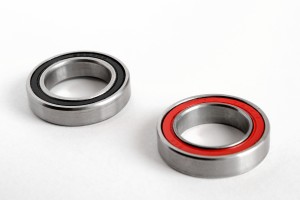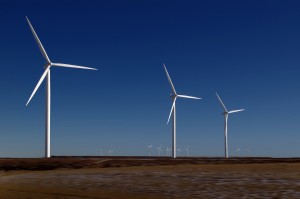Centuries after the first energy-generating windmill was invented, wind power continues to reshape how the world creates electricity. The numbers are revealing. According to the Global Wind Energy Council, the industry created over 1.1 million jobs globally by the end of 2016. The United States is now home to more than 53,000 wind turbines. They provide over 30 percent of the electricity for four states—Kansas, South Dakota, Iowa and Oklahoma. Texas leads the nation for wind capacity with a whopping 22,600 megawatts of wind power installed in the state.
As the public pushes for increasingly larger and less expensive wind turbines, gearbox manufacturers are struggling to keep up. As Windpower Monthly notes, wind turbine gearboxes have kept failing for nearly three decades, affecting almost every company that makes them including Enron, Wind Energy Group and Vestas. Problems with bearings in gearboxes may be the main culprits in gearbox failure—for wind turbines and beyond.
Bearings used in gearboxes are often the catalyst that drives the unit to fail. While Falk gears may seem like they have a more difficult job, bearings are especially susceptible to high contact stresses and bits of debris in the lubricant causing negative effects. Neale Consulting Engineers has traced back half of all the gear failures it has studied over 30 years to bearings.
Falk Gearboxes and Bearings Explained
Depending on their size, Falk gearbox parts include different types of bearings. Rolling bearings are the most common among industrial gearboxes, and most gearboxes that are small- and medium-sized use them. In general, only the smallest and largest gearboxes use plain bearings.
Rolling bearings are especially susceptible to a range of issues. Besides spherical roller bearings, they are prone to misalignment, and they also are sensitive to vibration and shock, lubrication defects and contamination. Unclean oil, for instance, can wear on bottom bearings as it builds up in vertical shafts. Gearboxes in storage might be in danger of bearing damage because of vibrations.
Prominent Gearbox Failures
Gearbox failures happen to industries across the board. For example, the wind industry tends to stay quiet about the causes of their gearbox failures, but bearings have often been at the root. According to the U.S. Department of Energy, most wind turbine gearbox failures happen thanks to the bearings. Axial cracks that develop on the bearings when they are moving at medium to high speeds are the main driver of bearing issues.
In the late 1990s, NEG Micon retrofitted more than a thousand of its wind turbines after the gearboxes failed. The company publicly credited the main cause of the 600 kW and 750 kW machines failing to the gearbox bearings. Many others in the industry agree that bearing failure is the start of gearbox failure. However, a big barrier to preventing bearing failure is businesses’ secrecy about it.
“Nobody will tell each other the truth,” REM Surface Engineering Mark Michaud told Wind Power Monthly. “Nobody ever says what was wrong with their gearbox or bearings.”
Still, the gear industry is pushing for progress. Experts are working to improve load prediction methods, especially as wind turbines get bigger, for one. They’re also remembering to consider how various speeds and variations also play a role.
While there isn’t a lot of public information available out there about bearings’ role in gearbox failures, a Falk gearbox specialist can point you in the right direction. We at Mar-Dustrial have the largest inventory in the industry, and each Falk speed gearbox comes with a year warranty. You can trust us to prevent and fix problems right.
Posted under Falk Gearboxes on Monday, November 12th, 2018
